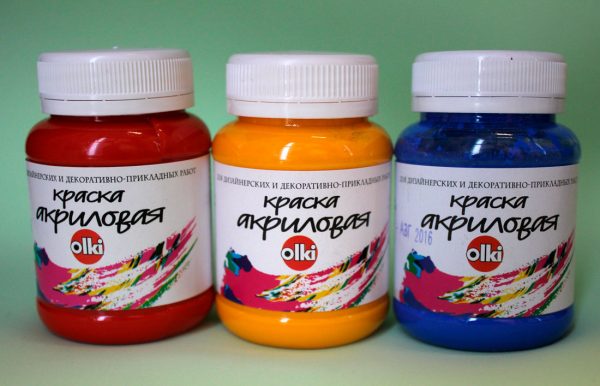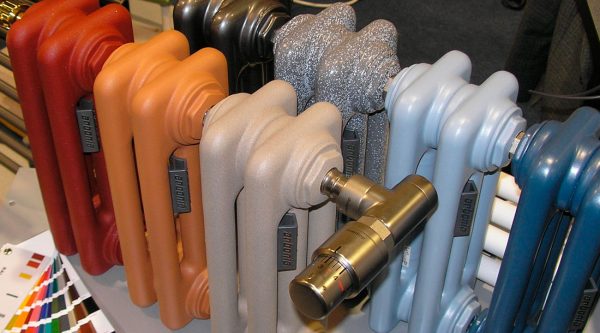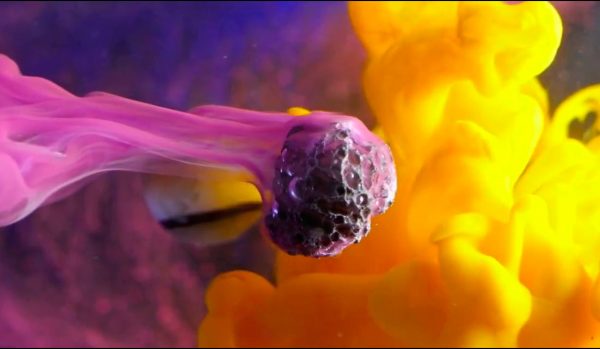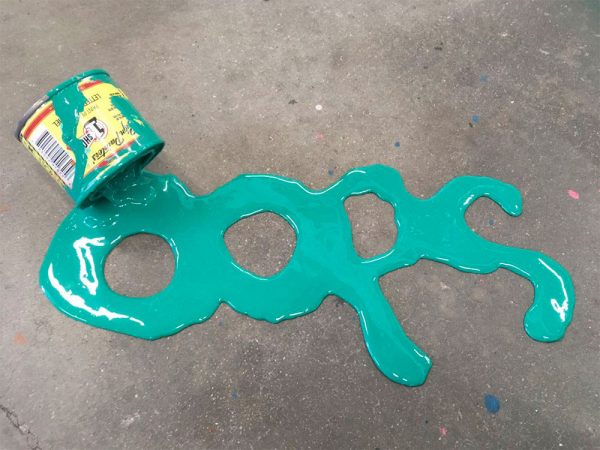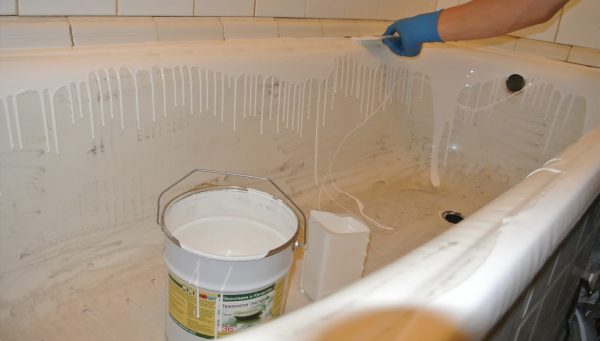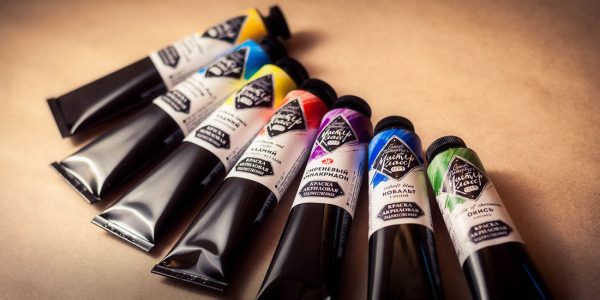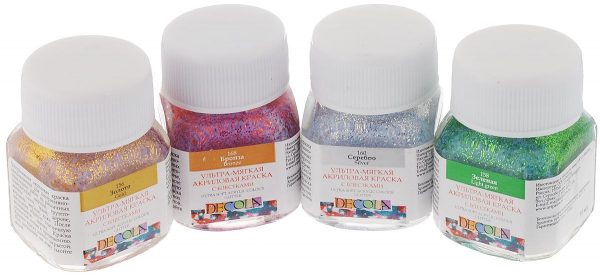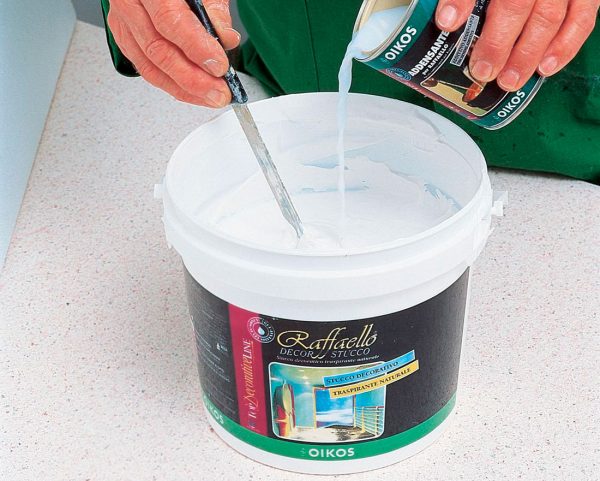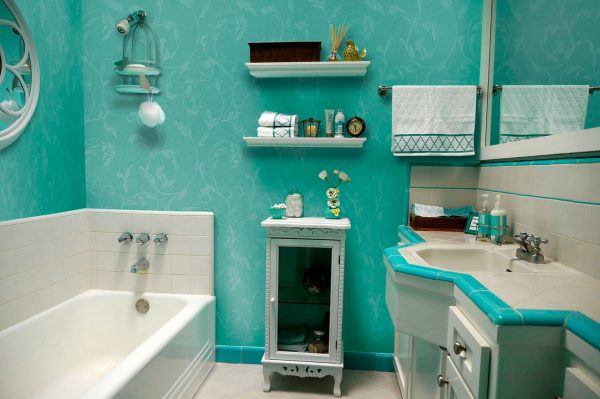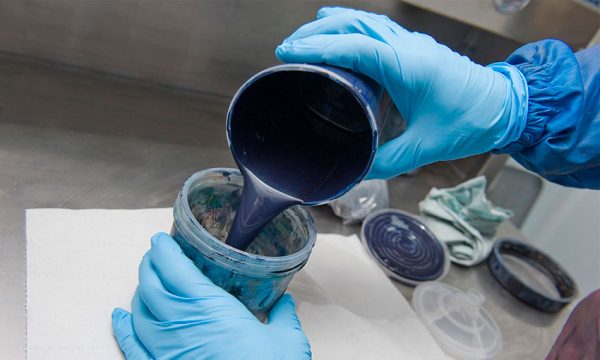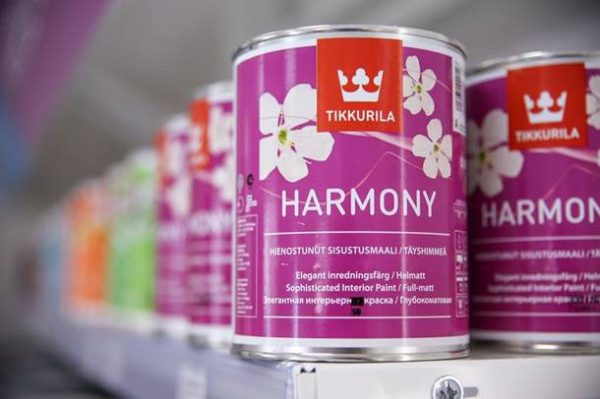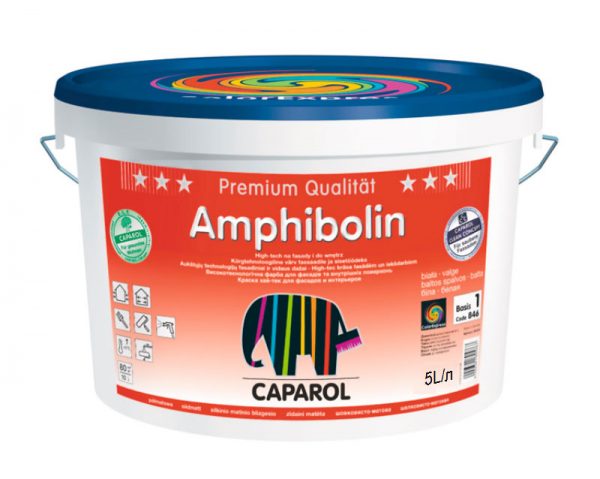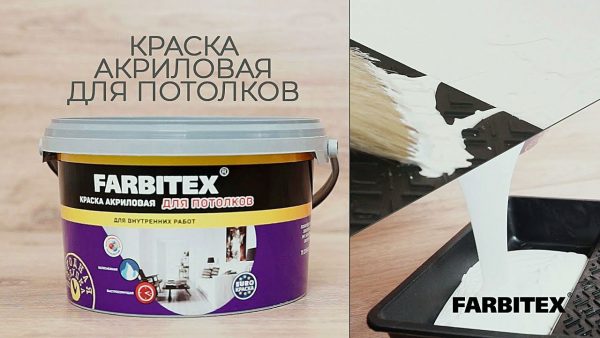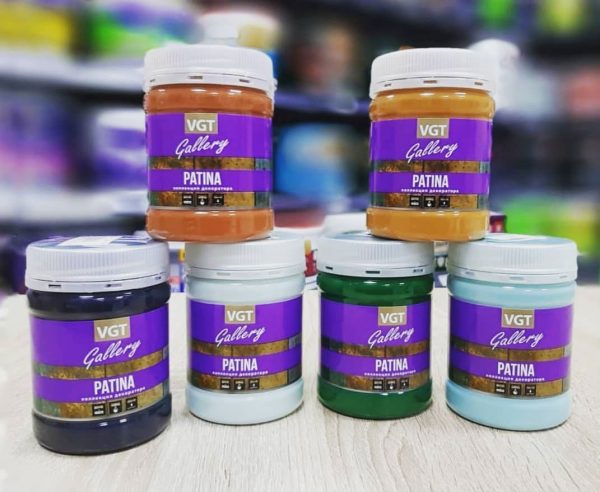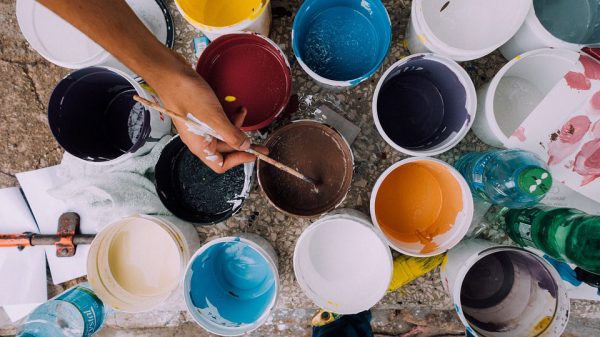For construction and decorating, acrylic paint is often used. This material is harmless to humans, easy to apply and has many other benefits. Due to the richness of colors, acrylic paintwork can be used in updating the interior, and it will satisfy even the most demanding users.
- Description of the material and its scope
- Acrylic paint composition
- Binders
- Fillers
- Color pigments
- Solvents and other additives
- Component Mixing Procedure
- Features of acrylic compositions
- Paint advantages
- Disadvantages of acrylic
- Types of acrylic paints
- Front
- Interior
- Enamels for bathtubs
- Automotive
- Nail Formulations
- Paints for painting
- Other material classifications
- Acrylic paints selection
- Wet Paint
- Paints for ceilings
- Matte and glossy compositions
- How to dilute the material
- Paint Tips
- Material packing
- Color spectrum
- Popular manufacturers
- Dulux
- Tikkurila
- Belinka
- Caparol
- Litokol
- Farbitex
- Ceresit
- ALPINA
- Vgt
- Tex

Description of the material and its scope
Acrylic paint is understood as a water-dispersion material based on polyacrylates, which act as film-forming agents and are derivatives of acrylic acid. Like other water-based products, acrylic paints can be diluted, easily tinted with water-pigment pastes, and as they dry, they acquire a certain resistance to moisture. Since there are no organic solvents in the materials, they are harmless both during application and throughout the entire life cycle.
Acrylic has excellent technical characteristics, which leads to a wide range of its application. Depending on additional additives, paints can be used outdoors and indoors, in painting, for bodywork. Their texture is light, but after polymerization they give a fairly strong, resistant to adverse factors coating. The compositions do not fade under the influence of ultraviolet, maintaining their bright colors. They practically have no restrictions regarding the materials that can be applied:
- tree;
- plaster;
- drywall;
- concrete;
- brick;
- metal.
Indoor acrylic coatings are used for painting walls and ceilings. Many people prefer to apply them on wallpaper, intended for painting. Special tools are even suitable for the treatment of water pipes, heating systems, radiators.
to contents ↑Acrylic paint composition
Acrylic acts as the basis in any acrylic paintwork, but in addition to it, a number of additional components are necessarily contained.
Binders
The base, or binder, of the paint is polyacrylates in the form of an aqueous dispersion, which are considered film-forming agents. They are responsible for the strong adhesion of the composition to the surface, due to their strength they provide a long service life of the coating. The higher the quality of the base, the more reliable the dried film will be, the less it will respond to mechanical damage.
Fillers
The carrier for the base in this paintwork is water, which makes an emulsion of an acrylic polymer.The paint dries due to the evaporation of water, but this process occurs too quickly, so retardants are added to the paintwork materials - substances based on glycerol or glycol.
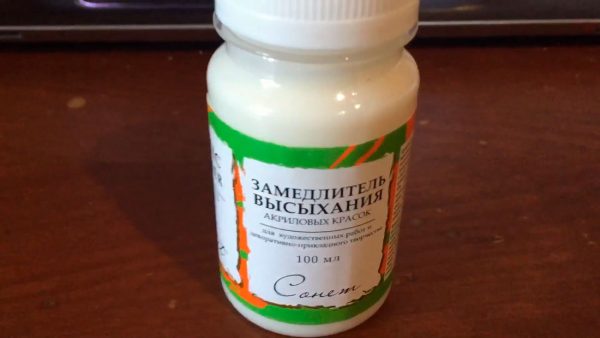
In addition to acrylic copolymers, up to 10% of auxiliary monomers can be present in paints. The latter are able to significantly affect the properties of the material, adjusting them according to a specific purpose. Thanks to such fillers, you can change:
- elasticity;
- strength;
- hardness;
- chemical resistance;
- adhesion;
- colloidal stability.
Also, as a filler, paints often contain natural minerals: talc, chalk, dolomite, calcite, kaolin, mica, barite and others. Efficiency is given by the addition of crystalline fillers with high reflectivity.
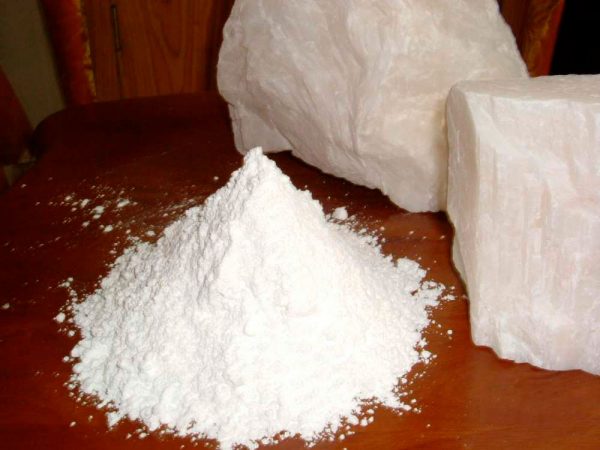
Color pigments
Pigments are needed to give a certain color to the paint. Usually they are a powder, less often a paste or liquid, which is introduced into the main composition. Pigments also increase the hiding power of paintwork materials, enhance its resistance to ultraviolet and other atmospheric factors.
Pigments are organic and inorganic, synthetic and natural. Often, low-temperature weather-resistant substances are used for the acrylic composition - oxides of chromium, iron, lead, metal sulfides. Of inorganic colors, titanium dioxide is also used, which is introduced into superwhite paints and has a high light refractive index.
Organic pigments are used less frequently. They are tinting pastes of bright color, while they are more expensive, but have less resistance to weathering. Typically, pigment particles are 300-400 μm in size, since it is they that optimally fill the voids between the components of the paintwork materials and are evenly distributed throughout the material.
to contents ↑Solvents and other additives
Organic solvents are only added to special formulations, but most acrylic paints are diluted with plain water. The liquid reduces viscosity, gives proper density and provides ease of application. Among the additional substances in the composition of acrylic paints may be present:
- emulsifiers;
- Surfactant;
- biocides;
- defoamers;
- stabilizers;
- preservatives;
- initiators.
Auxiliary additives change the quality, technical, functional characteristics of the paint, give it special properties. They also provide the necessary shelf life, coating service life, composition stability, and regulate the process of film formation. For example, surfactants and emulsifiers help pigments to better distribute in the total mass, reduce the surface tension of emulsions. Preservatives inhibit the development of microbes, molds, fungi, antifoam agents reduce the formation of foam, thickeners regulate fluidity.
to contents ↑Component Mixing Procedure
In the manufacture of paint, first an acrylic copolymer is placed in the container, pigments and a solvent (water) are poured. Then a strictly measured amount of stabilizing and target additives, fillers is added. As soon as ready, the paint is packaged in a container, but each batch is preliminarily tested for compliance with GOST or TU.
Features of acrylic compositions
Acrylic products are considered universal, while they are very popular among users. After drying, the surface becomes matte, although glossy compositions with a beautiful shine due to special fillers and additives are also on sale. Drying time of coatings varies depending on the specific brand from 20 minutes to 24 hours.
to contents ↑Paint advantages
All acrylics based on water dispersion are safe for humans, they are environmentally friendly and do not carry a risk to nature, animals. Since only non-toxic substances are used to create, paints are allowed to be used in children's rooms, hospitals, kindergartens. Other advantages of paintwork:
- No pungent odor. After applying the compositions, you can not ventilate the room, work slowly, this does not require the use of a respirator.
- Fire safety. There are no substances in the composition of materials that are prone to rapid ignition. Moreover, special acrylic paints with the addition of non-combustible components that stop combustion are on sale.
- Quick drying. After application, some paints literally dry before our eyes, so you won’t have to wait a long time before using the coating. Nevertheless, when drying, it is necessary to strictly follow the manufacturer's recommendations, because from a large number of layers the drying time increases.
- A variety of shades. On sale there are many colors of tinting pastes and dry pigments, it is easy to choose the material for any interior. Using acrylic paints, you can create various drawings, decor elements and ornaments.
- Elasticity and hiding power. The paint is perfectly distributed on the surface, covers it with a dense layer, while it does not crack, does not crumble after drying.
- Strength and durability. Acrylic compounds do not wear out, since a strong protective film is formed on their surface. Many of them allow washing and cleaning, which facilitates care. The highest quality coatings last up to 10-12 years.
- Optimum microclimate. The film of material remains vapor-permeable, therefore, does not violate the microclimate of the room. Dust, dirt does not accumulate on the paint, since its pores have a minimum size.
- Universality. Paints are suitable for completely different situations, for external and internal works, they can be combined with other coatings. In addition, acrylic is excellent for most well-known building and finishing materials.
- Frost resistance. Acrylic can easily tolerate low temperatures, so it is suitable for use outdoors or in unheated rooms. The paint does not crack from frost for many years.
Disadvantages of acrylic
The disadvantages of acrylic paints are few. When working with them, you must observe the temperature regime: if indoors or outdoors, less than +10 degrees, it is better to postpone the work. Also, the container with the product must be properly stored: if you leave it even a little ajar, the composition will quickly become worthless due to contact with air.
Types of acrylic paints
Depending on the purpose and additives included in the composition, several types of acrylic paints are distinguished. Each tool has its own technical characteristics and features.
Front
Such compositions are excellent for cladding facades, painting street structures, fences and gates, and possess the necessary technical parameters. They easily tolerate temperature extremes, the effects of frost, moisture, while only the cheapest means require subsequent application of a protective composition. Among the facade paints there are those that include organic solvents - they are durable, reliable.
Compositions for outdoor work based on water are considered more sensitive to the influence of atmospheric factors, but are hardened by adding marble chips. When applied to metal, agents should be selected that include components that protect against rust. To coat wooden products, antifungal additives are added to the paint. Acrylic compounds are ideal for brick, concrete, stone, plaster.
to contents ↑Interior
The main difference between interior paints and facade paints is less resistance to moisture. Nevertheless, when used in dry rooms, they also will not cause trouble: they will serve for a long time, will not be washed off, will not crumble and crack, and will also retain their original shade. Due to the ease of application and low price, this option is the most popular when painting walls and ceilings, because it allows you to realize any designer's ideas.
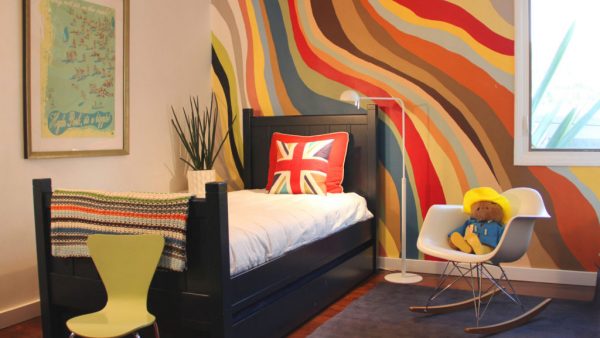
Also, acrylic compositions can be used for painting certain areas or interior items.They are well suited for decorating wooden windows, doors, and with some paints you can even decorate mirrors and furniture, paint pictures directly on the walls. Unlike oil coatings, water-dispersion coatings do not cause an unpleasant odor; therefore, they can be used in any season without airing the room.
to contents ↑Enamels for bathtubs
Acrylic based enamels are well suited for work in the bathroom, for example, for the restoration of bathtubs. Old paint is removed manually or by sandblasting, then degrease the surface and apply new material. The spraying will hold tight, will not deteriorate from water, including hot water, and will not be damaged by temperature changes. The main thing is to apply a coating of sufficient thickness (up to several millimeters) so that it is solid and durable. Quality bath restoration compounds last up to 10 years.
Automotive
Acrylic painting of the car body has been practiced for a long time, because it gives the car a more aesthetic appearance and is durable, protects the metal from corrosion. Typically, automotive acrylic paints are more expensive, and should only be applied after a special primer has been applied. With strict adherence to the technology, high-quality anti-corrosion protection of the body will be provided, the adhesion of paintwork materials with the base will increase.
Acrylic automotive paints come in two types:
- basic - play the role of the foundation, help subsequent layers to lie more evenly;
- decorative - perform an aesthetic function and thicken the coating, make it more resistant to aggressive factors.
Usually, when painting the body, one base coat and at least two decorative layers are applied - this ensures the proper thickness and strength of the paint film.
to contents ↑Nail Formulations
Special acrylic paints are well suited for decorating nails; therefore, they are often used in the provision of “nail service” services. Acrylic manicure guarantees an unusual design. Acrylic compositions dry quickly, lie evenly, without drips, before hardening, they are easy to erase to create a new, more successful decor. Using thin brushes, acrylic paints the most complex patterns, using both translucent and matte paints. Manicure masters also have dense pastes for glossing over the previous layer, which completely hide the nail polish even of the darkest color.
to contents ↑Paints for painting
Compared to gouache, watercolor, acrylic paints are much denser, look more attractive and brighter. These properties are due to their texture, pigment saturation and a variety of tones. Using acrylic, you can make volumetric pictures by superimposing layers on top of each other.
Other advantages of acrylic for creativity:
- hypoallergenic, complete safety for children;
- the ability to wash off when mistakenly applied;
- drawing on paper, cardboard, fabric, canvas, glass - any basis will do;
- application in different styles, art techniques;
- long service life without cracks, yellowing;
- lack of sunburn;
- moisture resistance, the possibility of careful rubbing from dust.
Other material classifications
Depending on the properties and method of drying, you can group acrylic paints in this way:
- cold drying compositions (based on thermoplastic polymers);
- hot drying coatings (composed of thermosetting polymers);
- water-emulsion paints of natural drying.
According to their specific qualities, paints are divided into waterproof, washable, weather-resistant, and light-resistant. You need to select a specific type based on the tasks and the type of room in which to use them. Many formulations are considered universal, as indicated by the manufacturer on the packaging. Other paints, on the contrary, are intended for a specific type of material, and the manufacturer also warns about this (for metal, wood, concrete). In appearance, acrylic compositions are:
- matte;
- glossy;
- semi-gloss;
- semi-matte;
- silky with a matte base.
to contents ↑They all look beautiful, so you need to choose according to the design idea in a particular room.
Acrylic paints selection
To buy, you should visit a construction supermarket or another store where credible brands of paint and varnish products are sold. This will exclude the purchase of low-quality fakes, which may not contain acrylic at all. If the paint is purchased for walls, ceilings in a damp room, you should pay attention to its resistance to moisture and the presence of antiseptic additives in the composition.
On each can of paint the permissible number of brushings on the coating is always indicated (indicated by numbers). The manufacturer guarantees no damage until this indicator is reached (usually it is no more than 30). The shelf life of a saturated color that does not differ from the original in intensity is also indicated on the label - in years or months.
The ceilings in the rooms are most often painted white. When buying such a paint you need to be more careful: often the mark "white" does not correspond to reality, and in reality the material is milky or yellowish. The perfect shade can only be obtained by applying superwhite paint.
When buying, it is also important to evaluate the level of viscosity of the paint. It is difficult to work with too viscous mixtures, especially with a spray gun. They will have to be diluted, which is rather laborious when processing large areas. Watery paint is also not the best solution, it does not have sufficient adhesion and hiding power, so the quality of painting the walls will remain at a low level.
According to professionals, the most convenient and high-quality products are with the addition of thixotropic substances. Thanks to them, the paint does not flow on the wall, does not drip from the tools, but its consistency becomes optimal when mixed. After drying, such compositions form a perfectly smooth polymer film on the surfaces.
to contents ↑Wet Paint
In the kitchen, bathroom or other wet areas, you need to use acrylic paint marked "washable." It has moisture-repellent properties, and products with the additional introduction of latex still do not let steam in, are not afraid of heat loads, therefore they are well suited for arranging a kitchen apron and walls in the bathroom. Since moisture-resistant paints are more resistant to mechanical damage, they can be used where walls often have to be washed.
to contents ↑Paints for ceilings
To process the ceiling, you can buy ordinary acrylic paint in white or superwhite. As a rule, on the bank there is a mark “for ceilings” or “for walls and ceilings”. If desired, colored pasty colors of the desired shade are introduced into such paints, which make it possible to give an unusual appearance.
Matte and glossy compositions
When choosing between gloss and a matte surface, you need to be guided by the design of the room and personal preferences. Matte textures visually smooth the unevenness of the walls, make the room more austere, but stylish. Glossy compositions emphasize all the bulges, so the walls should be smooth and perfectly prepared.
The use of glossy paint on the ceiling, on the contrary, will be a very successful design option. Such paintwork will give shine, visually increase the dimensions of the room, fill it with space. When buying, you should remember about the drying time of paints: glossy ones usually dry much faster than matte paints (in just 30-40 minutes).
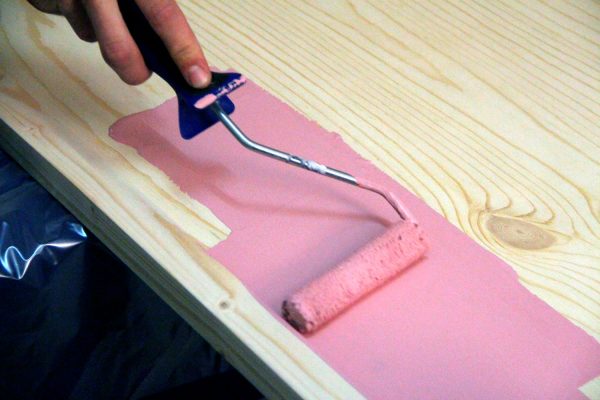
How to dilute the material
Too thick paint must be diluted. As a solvent, water, which is part of all acrylic paints, should be used.Also, for dilution, you can use special tools that are sold in stores: they can only be a solvent or additionally give special effects (gloss, sparkles, metallic).
When adding water, it is important to observe the correct proportions so as not to spoil the paint. The best option is to dilute the material with water 1: 1, if the product in the jar is very thickened. Such a mixture will cover the walls with a dense layer without gaps, and will maintain good hiding power.
You can use diluted paint as a base, and on top perform another, but thinner layer, diluting the material in a 1: 2 ratio. Also, liquid paint can be used for cosmetic renovation of walls: the composition will cover small impurities, wash off dust, remove stains.
It happens that acrylic coatings dry out very much and become completely unusable. Some try to dilute it, but such actions lead to the opposite effect - the material goes lumpy, becomes heterogeneous. It is necessary to completely dry acrylic, grind it to a powder, and only then dilute it with cold boiled water. The qualitative characteristics of such a paint will be worse than that of the original mass, in addition, the drying and crushing procedure is time-consuming and time-consuming. Therefore, it is recommended to purchase a new acrylic composition, which is easy to work with, and the result will be at a high level.
to contents ↑Paint Tips
For work, you need to prepare brushes, rollers, a container for paint and, if necessary, a stepladder. First, the walls are leveled, previously removing the old peeling coating. The last layer should be a well-polished finishing putty of white color. Initially, smooth walls are enough to clean from dust, dirt, degrease. Immediately prior to staining, the base is primed for 1-2 layers - this will reduce the absorption, paint consumption, increase the adhesion and evenness of its application.
Staining begins from the corners. Having well painted the perimeter of the walls with a brush or roller, they go to the central part. It is recommended to perform movements horizontally in the direction of the window - this will help to make the coating more uniform. Usually 3 layers are applied, but with low surface contamination, two are sufficient.
Professionals often work with acrylics with a spray gun. At home, you can use a roller, and in hard-to-reach areas and corners - a convenient brush with strong bristles that will not fall out. Acrylic dries quickly, so the finishing work needs to be done at an accelerated pace, otherwise there will remain stains on the wall or ceiling.
to contents ↑
Material packing
Acrylic compounds are sold in containers of different sizes and types. Nail products are sold in jars of 20-100 ml, materials for drawing - in tubes, bottles, jars of 50-150 ml. Interior and exterior paints are presented in containers from 1 l to 50 l, depending on the manufacturer. For industrial purposes, barrels of large volume (up to 100-150 l) are purchased.
Color spectrum
Shades of acrylic compositions are very diverse. Colors can be classic and unusual: with mother of pearl, sparkles, metallic, fluorescence. Among the matte tones you can find simple and original, bright and pastel. In various interior areas, bronze, gold and silver paints are considered popular.
Basic are white and beige compositions. Snow-white paint is easily tinted, and the tinting service is offered by most large supermarkets. You can choose any suitable color according to the proposed catalog and get the finished composition literally in 5 minutes. Recommendations for choosing a shade are as follows:
- for the bedroom it is worth giving preference to calm, soothing tones;
- for the living room, you can choose brighter shades;
- the kitchen is best decorated in a laconic cool tone;
- juicy colors are great for children: green, orange, yellow;
- in the styles of hi-tech, techno, you can use black, dark blue glossy colors, combining them with white, silver compositions.
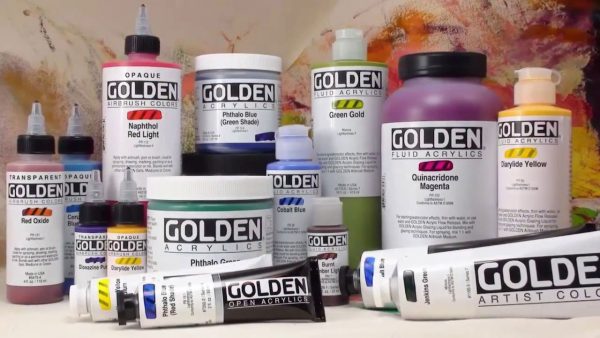
Popular manufacturers
Acrylic paints and varnishes are produced by almost all companies that make paints and varnishes. Below are those brands that you can buy without fear, because their quality is time-tested.
Dulux
A world famous manufacturer, regularly releasing new acrylic, latex and other compounds. High quality materials combined with a reasonable price. Paints of this brand have different technical characteristics: texture, resistance to external influences, moisture tolerance. From the company’s catalog it’s easy to choose the right option for any room.
to contents ↑Tikkurila
Another popular brand that introduced the widest selection of various paints and varnishes on the market. Tikkurila is famous for its very high quality products, but its price may be higher than that of analogues. Most acrylic compositions are universal. There is also a separate line of acrylic based products for baths, saunas.
to contents ↑Belinka
Paints of this brand are famous for strength, wear resistance. There are universal tools, as well as separate materials for walls, ceilings, wet rooms, facade paints. Many products are designed for regular mechanical, physical stress and aggressive chemicals.
to contents ↑Caparol
A German brand that always guarantees the quality and long service life of coatings. During its existence (more than 120 years), the company has gained worldwide popularity and recognition. All products are positioned as environmentally friendly, harmless to humans and the environment.
to contents ↑Litokol
The company produces high-quality interior and exterior paints based on polymers, resistant to pollution, with excellent water-repellent properties. There is a line of products for painting decorative plasters, other building mineral substrates, which include a patented protective system. All products are manufactured using the latest technology, do not fade, are not afraid of fungus.
to contents ↑Farbitex
Acrylic compositions of this brand are designed for work on concrete, brick, chipboard and fiberboard, wood, suitable for painting wallpaper. The funds are universal in respect of the premises in which they can be operated. They are suitable for application to walls and ceilings in living rooms, halls and halls, corridors, and other actively operated rooms.
to contents ↑Ceresit
Under this brand various paints and varnishes for external and internal works are made. Most paints have the following properties:
- made on a water-dispersion basis;
- white, to be tinted;
- vapor permeable;
- alkali resistant;
- weatherproof;
- environmentally friendly.
ALPINA
Under this brand, two product lines are produced: for home use and professional. All compositions are easy to apply, have high quality characteristics. In addition to them, a variety of tinting pastes, pigments, azure are produced. ALPINA paints are divided into those intended for indoor use, as well as for outdoor use. There are separate lines of waterproof compounds for the bathroom, baths, saunas.
to contents ↑Vgt
The structure of the company includes several laboratories and a research center where product quality is monitored and its new types are constantly being developed.When producing paints and varnishes, the climatic features of the regions are taken into account, the requirements of environmental friendliness, color purity, moderate cost are observed. The paint is packaged in containers of 1–45 kg.
to contents ↑Tex
Acrylic compositions of this brand, as well as acrylic latex paints are very resistant to external factors, dense, have good hiding power. Most materials are universal, while perfectly protecting the base from rust, rot, mold.
The use of acrylic paints seriously facilitates self-repair in the home. They are easy to apply, have no unpleasant odor, are evenly distributed on the surface and invariably give an excellent result even without the proper experience of the user.

